Distress Oxide

Surely if we are reading this post, we know and have previously used the Distress Ink many times. The Distress Oxide is an evolution of the Distress.
The Distress oxide ink - the grey edges ink pad - is one of Ranger’s flagship products. This is the fusion between a special dye and a pigmented ink that creates an oxidized and rusty reaction with contact with water.
Read moreThis particular formula generates a thicker covering ink which dries slower compared to other distress Inks. However, the oxidation is immediate, creating a chalky matte aspect to the project which can mask the whole background of your sheet. Although on dark coloured paper sheet, the ink colour gains in brightness.
But what does this special ink composition consist of? It's something completely new and revolutionary that has come out of Tim Holtz's creative head. If you know anything about scrap inks and their composition, you may have noticed that most of the inks we use are based on dye ink or pigment ink. In the case of Oxide, they are formed by pigments and dye, which allows us to work with them in different ways. So, at first glance, you may not see the difference, but when we explain their uses and properties, you are going to freak out.
Characteristics of Distress Oxide:
- They react to water. As we said, they are composed of a mixture of dye and pigment, when we apply the water these two components separate giving rise to incredible effects of oxidized aspect. The more water is applied, the more the components are separated and the more the image is blurred. If you want clear results, apply a very small amount of water.
- This type of effect is very much in line with Tim Holtz's designs. If you like vintage and Steampunk style, you have to try it!
- They are opaque, unlike the Distress Ink, which are translucent. This allows us to work very comfortably on dark surfaces and backgrounds. This property is achieved thanks to their pigment based composition, but they keep the properties of dye ink, a great combination! Distress Inks are not the best inks to print, but with Oxide you will notice the improvement.
- You can even use them to paint directly with a brush and colour your stamps. The colour becomes brighter and brighter.
- In addition, being opaque, you can work layers and layers of color, one on top of the other, but working once the previous layer has dried. And if you wet them, you can mix them again without any problems.
- The final finish of these inks is chalky or slate and their texture is rusty and somewhat rough.
Techniques with Distress Oxide:
We have different ways of working with Distress Oxide according to our tastes and needs. Here are some examples, although I'm sure you'll find many others and adapt them completely to your personal projects.
We can create backgrounds in the same way we did with Distress Ink, but this time getting a nuanced effect.
We can apply them with a sponge applicator or by painting directly on a laminated surface, adding water and passing the paper over the surface.
With the help of an embossing dryer you can remove the humidity from the inks and dry them, in this way it is much easier to layer the colours.
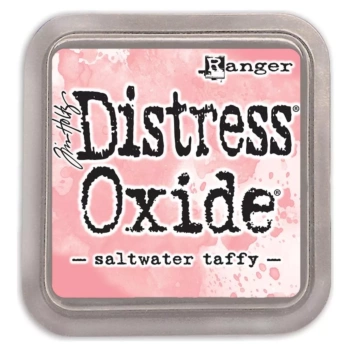 Ranger Tim Holtz Distress Oxide Ink Pad Saltwater TaffySpecial Price £4.75 Regular Price £5.94
Ranger Tim Holtz Distress Oxide Ink Pad Saltwater TaffySpecial Price £4.75 Regular Price £5.94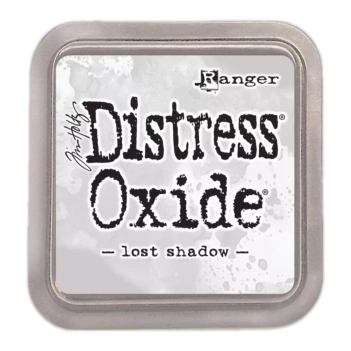 Ranger Tim Holtz Distress Oxide Ink Pad Lost ShadowSpecial Price £4.75 Regular Price £5.94
Ranger Tim Holtz Distress Oxide Ink Pad Lost ShadowSpecial Price £4.75 Regular Price £5.94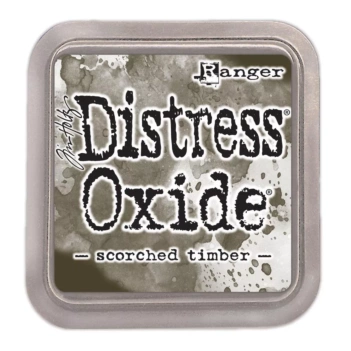 Ranger Tim Holtz Distress Oxide Ink Pad Scorched TimberSpecial Price £4.75 Regular Price £5.94
Ranger Tim Holtz Distress Oxide Ink Pad Scorched TimberSpecial Price £4.75 Regular Price £5.94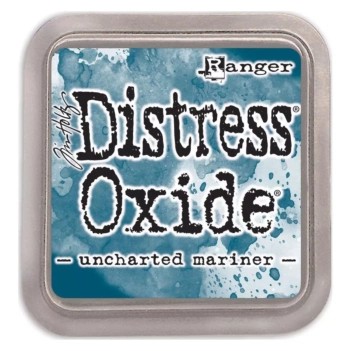 Ranger Tim Holtz Distress Oxide Ink Pad Uncharted MarinerSpecial Price £4.75 Regular Price £5.94
Ranger Tim Holtz Distress Oxide Ink Pad Uncharted MarinerSpecial Price £4.75 Regular Price £5.94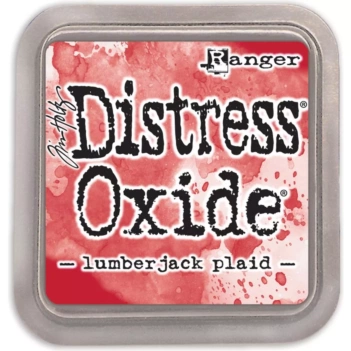 Ranger Tim Holtz Distress Oxide Ink Pad Lumberjack PlaidSpecial Price £4.75 Regular Price £5.94
Ranger Tim Holtz Distress Oxide Ink Pad Lumberjack PlaidSpecial Price £4.75 Regular Price £5.94 Ranger Tim Holtz Distress Oxide Reink Mustard Seed 14mlSpecial Price £4.07 Regular Price £5.09
Ranger Tim Holtz Distress Oxide Reink Mustard Seed 14mlSpecial Price £4.07 Regular Price £5.09 Ranger Tim Holtz Distress Oxide Reink Seedless Preserves 14mlSpecial Price £4.07 Regular Price £5.09
Ranger Tim Holtz Distress Oxide Reink Seedless Preserves 14mlSpecial Price £4.07 Regular Price £5.09 Ranger Tim Holtz Distress Oxide Reink Ground Espresso 14mlSpecial Price £4.07 Regular Price £5.09
Ranger Tim Holtz Distress Oxide Reink Ground Espresso 14mlSpecial Price £4.07 Regular Price £5.09 Ranger Tim Holtz Distress Oxide Reink Picked Raspberry 14mlSpecial Price £4.07 Regular Price £5.09
Ranger Tim Holtz Distress Oxide Reink Picked Raspberry 14mlSpecial Price £4.07 Regular Price £5.09 Ranger Tim Holtz Distress Oxide Reink Lost Shadow 14mlSpecial Price £4.07 Regular Price £5.09
Ranger Tim Holtz Distress Oxide Reink Lost Shadow 14mlSpecial Price £4.07 Regular Price £5.09 Ranger Tim Holtz Distress Oxide Reink Peacock Feathers 14mlSpecial Price £4.07 Regular Price £5.09
Ranger Tim Holtz Distress Oxide Reink Peacock Feathers 14mlSpecial Price £4.07 Regular Price £5.09 Ranger Tim Holtz Distress Oxide Reink Spun Sugar 14mlSpecial Price £4.07 Regular Price £5.09
Ranger Tim Holtz Distress Oxide Reink Spun Sugar 14mlSpecial Price £4.07 Regular Price £5.09
